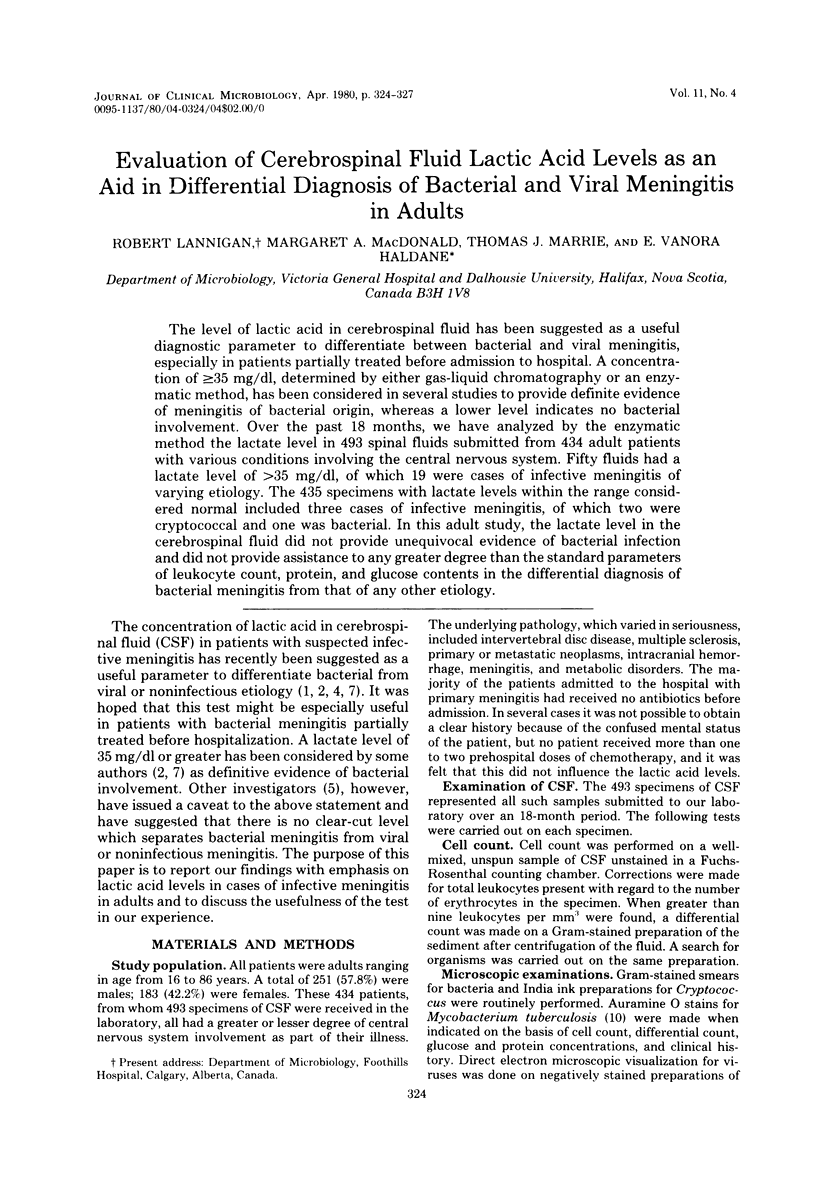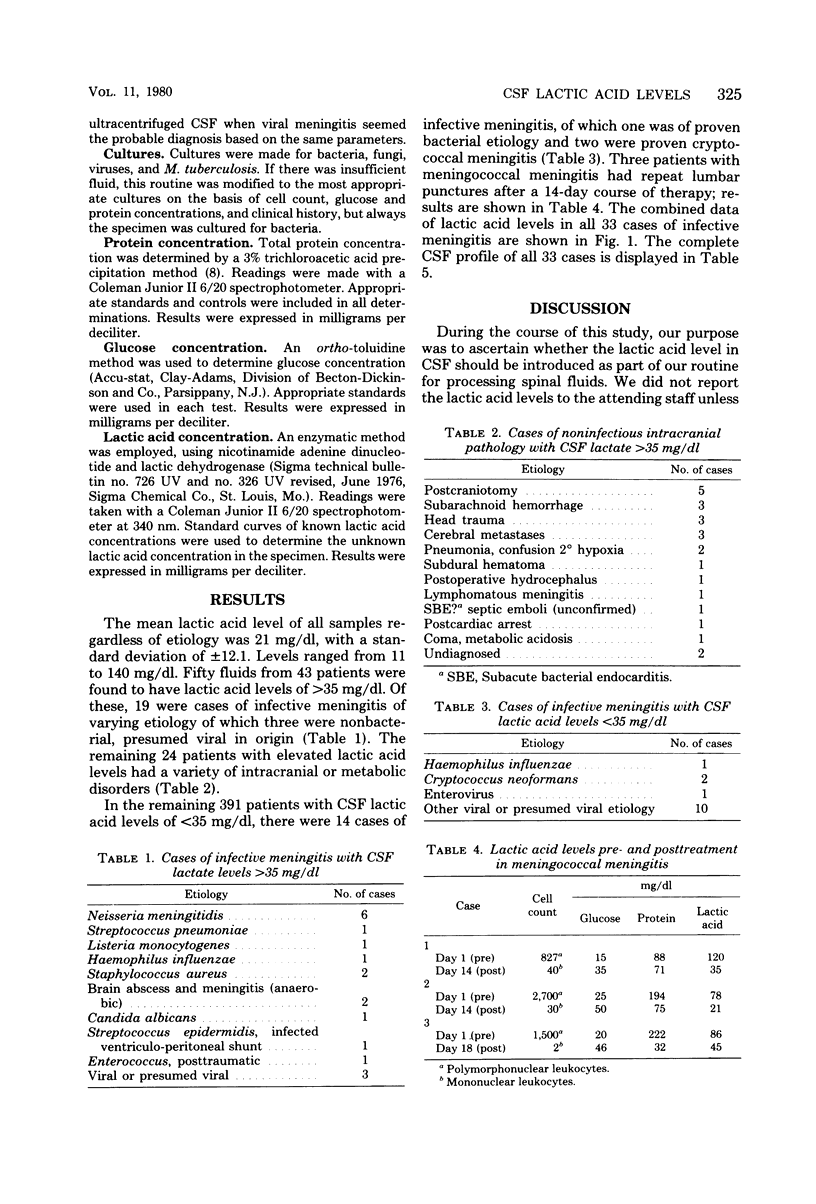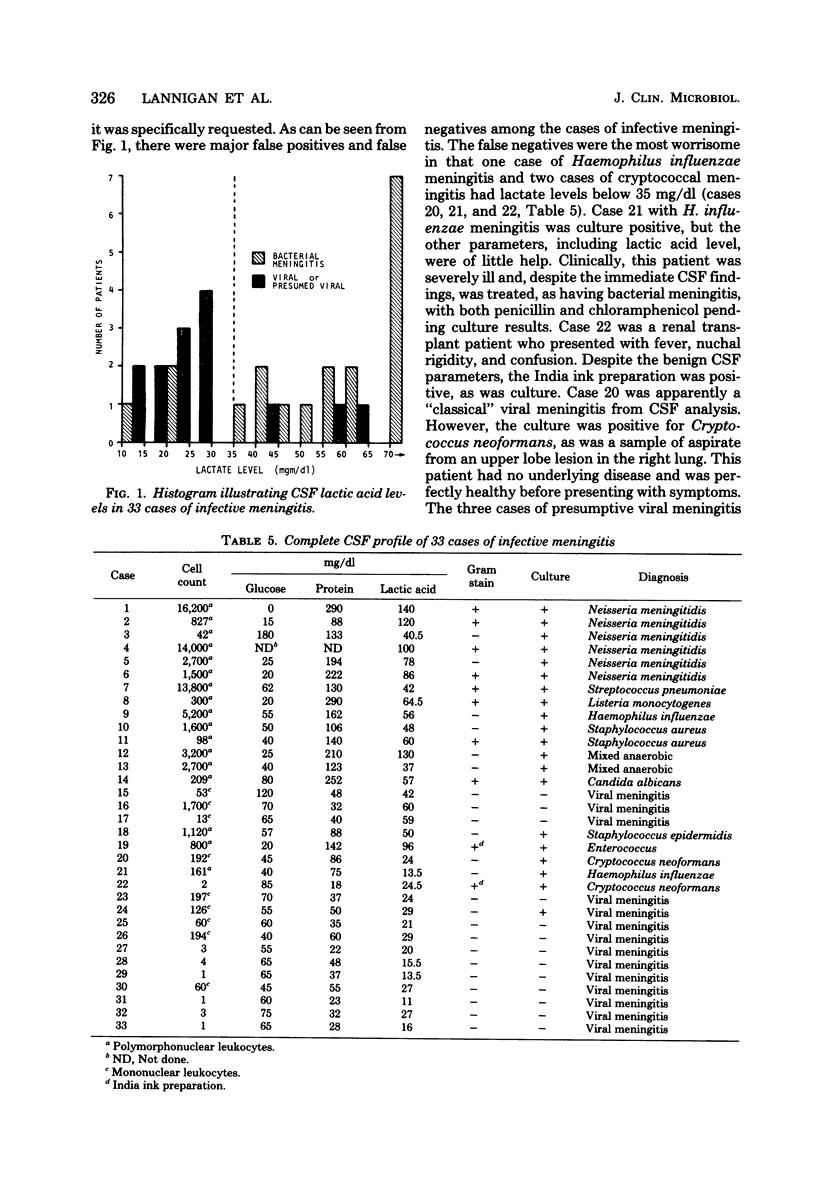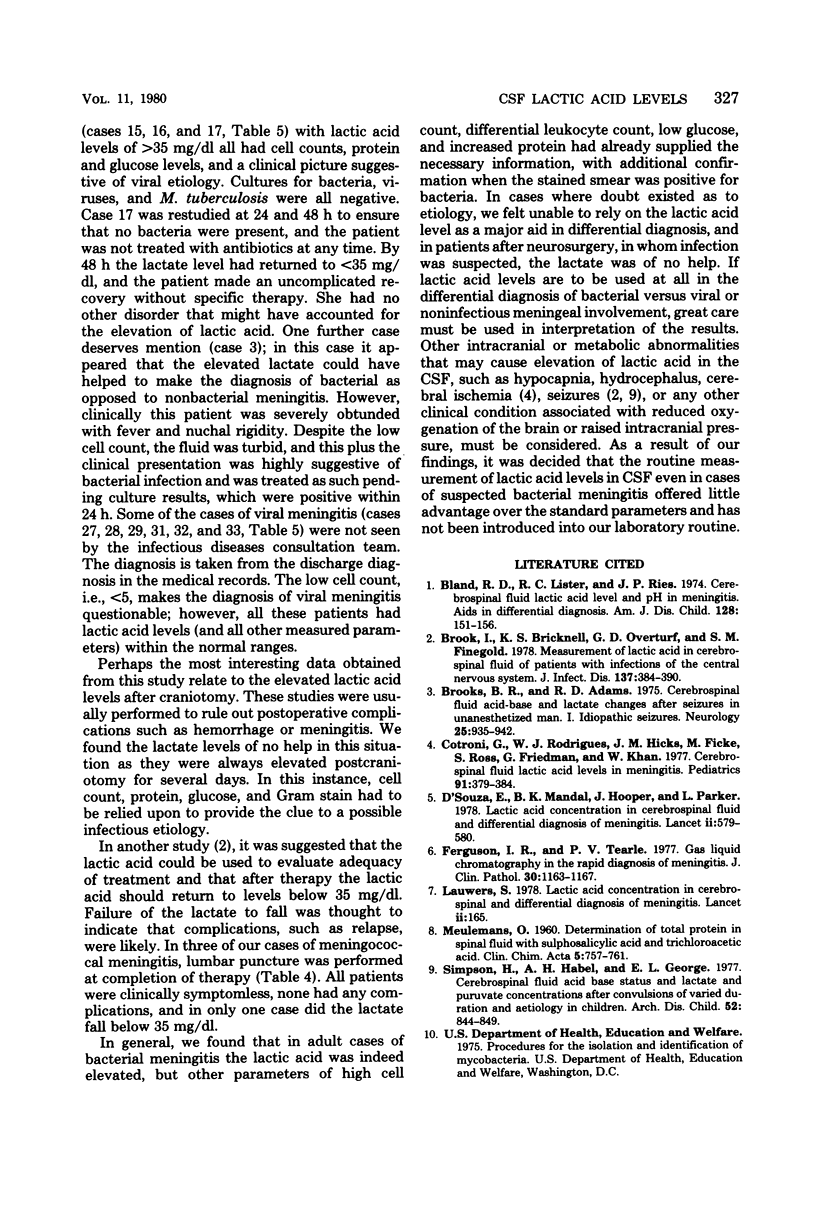Abstract
The level of lactic acid in cerebrospinal fluid has been suggested as a useful diagnostic parameter to differentiate between bacterial and viral meningitis, especially in patients partially treated before admission to hospital. A concentration of greater than or equal to 35 mg/dl, determined by either gas-liquid chromatography or an enzymatic method, has been considered in several studies to provide definite evidence of meningitis of bacterial origin, whereas a lower level indicates no bacterial involvement. Over the past 18 months, we have analyzed by the enzymatic method the lactate level in 493 spinal fluids submitted from 434 adult patients with various conditions involving the central nervous system. Fifty fluids had a lactate level of greater than 35 mg/dl, of which 19 were cases of infective meningitis of varying etiology. The 435 specimens with lactate levels within the range considered normal included three cases of infective meningitis, of which two were cryptococcal and one was bacterial. In this adult study, the lactate level in the cerebrospinal fluid did not provide unequivocal evidence of bacterial infection and did not provide assistance to any greater degree than the standard parameters of leukocyte count, protein, and glucose contents in the differential diagnosis of bacterial meningitis from that of any other etiology.
Full text
PDF



Selected References
These references are in PubMed. This may not be the complete list of references from this article.
- Bland R. D., Lister R. C., Ries J. P. Cerebrospinal fluid lactic acid level and pH in meningitis. Aids in differential diagnosis. Am J Dis Child. 1974 Aug;128(2):151–156. doi: 10.1001/archpedi.1974.02110270025006. [DOI] [PubMed] [Google Scholar]
- Brook I., Bricknell K. S., Overturf G. D., Finegold S. M. Measurement of lactic acid in cerebrospinal fluid of patients with infections of the central nervous system. J Infect Dis. 1978 Apr;137(4):384–390. doi: 10.1093/infdis/137.4.384. [DOI] [PubMed] [Google Scholar]
- Brooks B. R., Adams R. D. Cerebrospinal fluid acid-base and lactate changes after seizures in unanesthetized man. I. Idiopathic seizures. Neurology. 1975 Oct;25(10):935–942. doi: 10.1212/wnl.25.10.935. [DOI] [PubMed] [Google Scholar]
- Controni G., Rodriguez W. J., Hicks J. M., Ficke M., Ross S., Friedman G., Khan W. Cerebrospinal fluid lactic acid levels in meningitis. J Pediatr. 1977 Sep;91(3):379–384. doi: 10.1016/s0022-3476(77)81304-8. [DOI] [PubMed] [Google Scholar]
- D'Souza E., Mandal B. K., Hooper J., Parker L. Lactic-acid concentration in cerebrospinal fluid and differential diagnosis of meningitis. Lancet. 1978 Sep 9;2(8089):579–580. doi: 10.1016/s0140-6736(78)92918-5. [DOI] [PubMed] [Google Scholar]
- Ferguson I. R., Tearle P. V. Gas liquid chromatography in the rapid diagnosis of meningitis. J Clin Pathol. 1977 Dec;30(12):1163–1167. doi: 10.1136/jcp.30.12.1163. [DOI] [PMC free article] [PubMed] [Google Scholar]
- MEULEMANS O. Determination of total protein in spinal fluid with sulphosalicylic acid and trichloroacetic acid. Clin Chim Acta. 1960 Sep;5:757–761. doi: 10.1016/0009-8981(60)90020-6. [DOI] [PubMed] [Google Scholar]
- Simpson H., Habel A. H., George E. L. Cerebrospinal fluid acid-base status and lactate and pyruvate concentrations after convulsions of varied duration and aetiology in children. Arch Dis Child. 1977 Nov;52(11):844–849. doi: 10.1136/adc.52.11.844. [DOI] [PMC free article] [PubMed] [Google Scholar]


